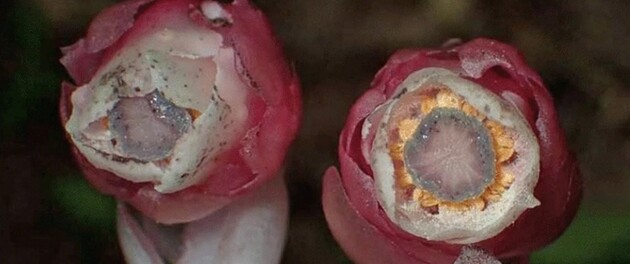Plants have chosen an alternative way of obtaining energy.

Scientists have discovered in the shade of Asian forests a new species of plants that refused photosynthesis. According to Science alert, the leaves of these plants lack the green color because they preferred an alternative source of energy.
They take it from fungi in a process known as symbiotic mycorrhiza. It connects most of the plants of the forest floor into a large network.
Scientists previously believed that Monotropastrum humile, widely distributed in East and Southeast Asia, from the Himalayas to Japan, was the only plant species that obtained nutrients from fungi. Now they have found a plant that will be considered a separate species. It was named Monotropastrum kirishimense.
Read also: Svalbard's reindeer were able to adapt to climate change with the help of “Eskimo-like” grass
Extensive forest webs—networks of fungi and plant roots spanning entire forests—act as highways to deliver nutrients as well as wires to transmit information between plants through electrical and chemical signals. These connections help to strengthen the forest as a whole by redistributing resources from nutrient-rich areas of the network to nutrient-poor areas. They also allow plants to warn each other of predators and even help protect them from drought.
In response, the plants “pay” the fungi with nutrients, giving away part of the hydrocarbons obtained through photosynthesis. But Monotropastrum act differently: instead of “sharing” with mushrooms, they “steal” from them.
The most pronounced difference of the new species is its pink petals and sepals. But there are others. Unlike M. humile, the roots of the newly discovered plant barely protrude from the soil. They are also more closely related to one mycorrhizal lineage, Russula, while M. humile prefers a completely different variety of fungi.
Although the related species grow next to each other, their flowering periods do not coincide . M. humile blooms 40 days later than the identified species. Researchers believe that this is necessary so that the general pollinator of plants, the Bombus diversus bumblebee, cannot accidentally transfer the pollen of one species to another and thus the plant prevents possible hybridization.
Related video
Earlier Turkish scientists stated about the fact that they managed to discover a sylphium – a plant that was considered lost for more than 2000 years. The ancient Greeks and Romans considered it a “medicine for all diseases”.




